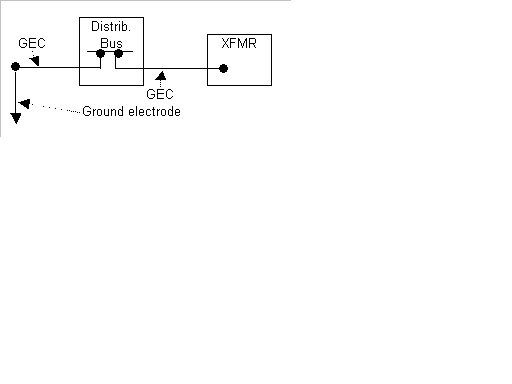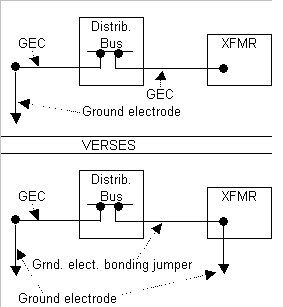No matter how this transformer gets grounded there are at least 3 distinctive items involved:
-
[1] ? Grounding electrode
[2] ? Grounding electrode conductor
[3] ? Grounding electrode bonding jumper
I would vote for the lesser of 3 weird ways (and it really seem?s compliant) and that?s
weird way #1, its weird because the bonding jumper will terminate in a panelboard before is gets to the service disconnects bus.
Weird way #1 -- Install a driven grounding electrode near the transformer:
250.30(7) -- ?Grounding electrode shall be as near as practicable to and preferably in the same area as the GEC connection to the system.?
250.30(5) -- ?Grounding electrode conductor shall comply with 250.64 (A), (B), (C), & (E)?
250.50 -- ?All Grounding electrodes?shall be bonded together to form a grounding electrode system.?
250.53 ? ?The bonding jumper(s) used to connect the grounding electrodes together to form the grounding electrode system shall be installed in accordance with 250.64 (A), (B), & (E)?,
seems to collide with 250.30(5).
250.64 (A), (B), & (E) ? will qualify the required grounding electrode bonding jumper(s) installation.
Weird way #2 ? Use existing grounding electrode system that includes only a CEE?s grounding electrode conductor at the service disconnect ground bus (main distribution board)
250.30(A)(3) ? ?A grounding electrode conductor?shall be used to connect the grounded conductor?to the grounding electrode.?
250.30(A)(5) -- ?Grounding electrode conductor shall comply with 250.64 (A), (B), (C), & (E)?
250.64 (C ) ? ?Grounding electrode conductor shall be installed in one continuous length without splice or joint except as permitted in (1) through (4).? This application would require a splice.
312.8 ? Qualifies the area needed to splice in a panel, this is an old enclosure space was not common so this is not likely.
Weird way #3 ? Use the feeder equipment ground for the GEC
250.30(A)(3) Ex 2, may really not be compliant?
What a trail! Any other thoughts, direction, reprimand...





